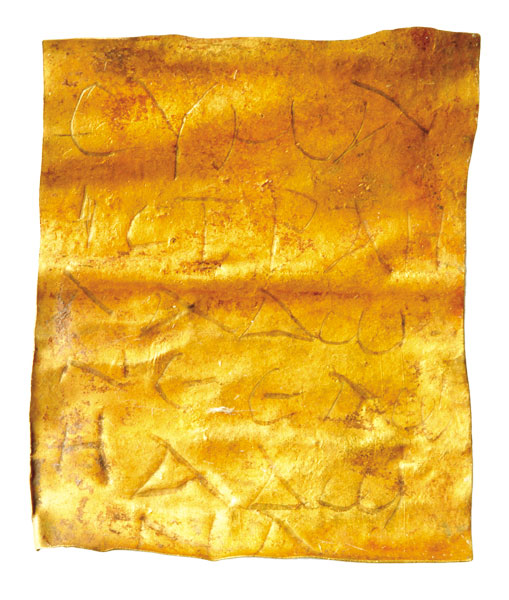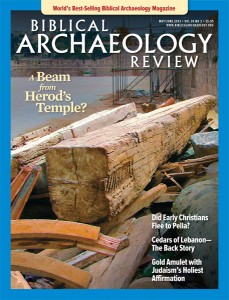
Near the village of Halbturn, Austria, about 60 miles east of Vienna, lies an ancient estate with its own graveyard. The estate was occupied from the late second century C.E. to the middle of the fifth century. The cemetery associated with the settlement includes approximately 300 graves.
Scholars were alerted to the ancient site in 1986 when two undisturbed graves were found in a field of crops. One of these graves, from the third century C.E., belonged to an infant about 18 months old. The skeleton was so poorly preserved that its sex could not be determined.
A small, undecorated silver capsule was buried with the child. Inside the capsule was a small rectangular gold leaf—measuring less than an inch on either side—folded and wrapped to form a small scroll.
Years later, when it was unrolled and unfolded, it was found to be inscribed with a text written with Greek letters but in the Hebrew language. The silver capsule and golden scroll formed an amulet that contained a version of Judaism’s holiest confession, known as the Shema‘ Yisrael (literally “Hear O Israel,” pronounced with emphasis on the second syllable of Shema‘) from Deuteronomy 6:4:
“Hear O Israel, the Lord our God, the Lord is one.”
The Greek text inscribed on the gold sheet reads as follows:
Already a library member? Log in here.
Institution user? Log in with your IP address.

